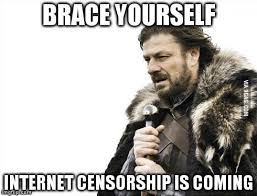Court Again Enjoins Anti-TikTok Executive Order–TikTok v. US
 This is another ruling involving Trump’s efforts to kick TikTok and WeChat out of the United States. This court, interpreting the authorizing statute, previously partially enjoined the Secretary of Commerce’s implementation of the anti-TikTok executive order. Again relying exclusively on statutory construction, the court concludes that the implementation was “arbitrary and capricious” and preliminarily enjoins all of it.
This is another ruling involving Trump’s efforts to kick TikTok and WeChat out of the United States. This court, interpreting the authorizing statute, previously partially enjoined the Secretary of Commerce’s implementation of the anti-TikTok executive order. Again relying exclusively on statutory construction, the court concludes that the implementation was “arbitrary and capricious” and preliminarily enjoins all of it.
This isn’t a hard case. The authorizing statute (IEEPA) does not allow the president to regulate “information or informational materials” or “personal communications.” That’s exactly what the EO did. For example, with respect to the informational materials piece, the court says:
the Court looks to the government’s stated goals to identify the regulatory objects of the Secretary’s prohibitions on TikTok. And again, those intended objects include stopping the exportation of data (which the government itself defines as “text, images, video, and audio”) to China and stopping the importation of propaganda into the United States. As those regulatory objects are “informational materials”—pictures, art, and films are included in the statutory definition itself—the Secretary’s prohibitions are efforts to control, through indirect (or mediate) means, the flow of information materials
The court opinion engages in more statutory parsing, but do the specifics really matter? The anti-TikTok/WeChat effort always has been irrevocably corrupted by xenophobia and censorship, so courts have unsurprisingly shredded it. Now, post-election, the Trump administration has largely abandoned the anti-TikTok effort–a stunning reversal of priorities if, indeed, national security were at risk. This ennui reinforces that the national security “concerns” were always obviously and mockably pretextual.
A different case involving TikTok’s users, Marland v. Trump, issued an injunction against the anti-TikTok EO. The DOJ argued that this court shouldn’t pile on with an overlapping injunction. The court responds: “Plaintiffs therefore need not wait for ‘Damocles’s sword . . . to actually fall on’ them ‘before the court will issue an injunction.'” I’m sure the DOJ will appeal this injunction, as it’s doing with in Marland, Both appeals disregard the First Rule of Holes.
Case citation: TikTok Inc. v. Trump, 1:20-cv-02658-CJN (D.D.C. Dec. 7, 2020)
Prior posts:
* Another Court Rejects Trump’s Censorial Anti-TikTok EO–Marland v. Trump
* Court Enjoins Trump Administration’s Attempt to Kick TikTok Out of App Stores–TikTok v. Trump
* WeChat Executive Order Enjoined Because (Of Course) It’s Unconstitutional–WeChat Users v. Trump

Pingback: News of the Week; December 9, 2020 – Communications Law at Allard Hall()